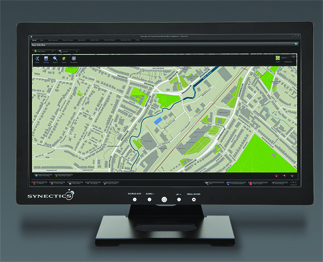The south London borough of Bromley has hundreds of CCTV cameras covering town centres and other open spaces. They’re monitored for public safety besides crime detection and prevention; including detecting traffic offenses, such as illegal use of bus lanes.
Before an upgrade to an open command and control platform, Bromley had two separate surveillance systems: one for recording video footage from public space cameras and the other for controlling the cameras throughout the borough. Seeking to reduce crime in ‘hot spot’ areas; and tackle fly-tipping, which was costing the council hundreds of thousands of pounds each year, more re-deployable cameras have been fitted. These mobile cameras are an additional resource to manage.
The council sought to bring these separate, individually managed systems into a one, for control room operators to react to incidents with responsive camera control, thereby to aid detection and response time.
William Ogg, CCTV Manager for the London borough of Bromley, said: “From the control hub we monitor over 200 cameras ‒ a mix of analogue and IP ‒ 24 hours a day, 365 days a year. It’s a tough challenge, which means we are always looking at ways we can support the surveillance team and utilize our technology more efficiently and effectively. We knew that upgrading to an open platform solution that could facilitate greater levels of integration with existing systems would be key to this.”
Use of Synectics’ Synergy 3 command and control platform has brought the two systems together for monitoring and management of cameras, permanent and temporary, providing operators with greater geographical coverage and situational awareness.
Importantly, the flexibility to add and/or move mobile cameras between fly-tipping and anti-social behavior ‘hot spots’ ‒ without an impact on infrastructure and maintaining command and control ‒ has given the flexibility to adapt to trends. The Bromley control room has become entirely paperless. All activity is automatically logged in real time to create a secure and auditable record of incidents and actions.
The GIS mapping within Synergy 3 has also helped to reduce the time and effort necessary to pinpoint a location or person(s) of interest. With operational efficiencies and reduced detection/response time, this has paved the way for more collaborative working between the control room and the police.
The control centre can now locate and review incidents quicker, which has already proven useful by preventing incidents from escalating and thus saving police time. Using Synergy 3, the operators can also now send video footage to the smart device of police on the ground besides provide them with detailed reports for incident types, trends and locations to assist with gathering evidence and resolving cases. The control room has seen a rise in the number of requests from the police for incident tracking, footage review and evidential support.
William said: “During a recent incident where four individuals were suspected of anti-social behavior, we were able to, upon request, directly stream the captured video to the police officer’s mobile device. Upon reviewing the footage, the officer was quickly able to identify the culprits and make the arrest. A case like this would have typically taken days – or even weeks – to review the footage and gather all the necessary evidence. Thanks to our upgrade to Synergy 3, it took less than an hour to resolve.”









